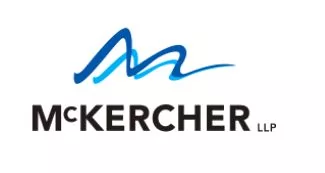COVID-19 has unfortunately forced many businesses to make the extremely hard decision to lay off workers until the economy improves. This is never an easy decision for owners and weighs heavily on them as they consider the family and personal needs of their employees. Consequently, employers are looking for ways to support their employees above and beyond the federal Employment Insurance ("EI") program (which only provides for a maximum entitlement of $573 per week). One way to provide that extra support is through a Supplemental Unemployment Benefit Plan ("SUB"). The purpose of this blog post is to provide an overview of SUBs and their legal requirements.
What is a SUB Plan?
A SUB plan is a plan that allows employers to top up an employee's EI benefits during periods of unemployment. That unemployment could include a temporary stoppage of work, training, illness, injury, or quarantine. The SUB Plan must be approved by Services Canada and must conform with their requirements (which are linked here for ease of reference). Critically, your employee's receipt of benefits under a SUB Plan will not reduce their EI entitlements.
Who can benefit from a SUB Plan?
Any employee in receipt of EI benefits can benefit from a SUB Plan. Your organization's plan can put additional restrictions as it so chooses. For example, the SUB Plan could be limited only to full-time employees, employees working at a particular location, or employees holding certain positions. Notably, if an employee is not in receipt of EI benefits, they can still benefit from the SUB Plan if the reason for their not receiving EI benefits is because: (i) they are serving the mandatory 1-week EI waiting period, (ii) they have insufficient hours of insurable employment to qualify for EI benefits (see here for a link as to hours requirements), or (iii) they have exhausted their EI entitlements.
How much can I pay under a SUB Plan?
The weekly payment under a SUB Plan, when added to the employee's weekly EI entitlements, cannot exceed 95% of the employee's normal weekly earnings. This percentage can be lower, and your organization could choose to express this as a dollar amount as opposed to a percentage (so long as the 95% maximum is observed).
How long can payments under the SUB Plan last for?
That is entirely up to your organization. There is no minimum or maximum.
How can I fund the SUB Plan?
A SUB Plan can either be funded or unfunded. In the current climate, it is expected most SUB Plans will be unfunded since most employers are setting these SUB Plans up in response to the COVID-19 pandemic. However, if an employer were setting up the SUB Plan before payouts were to occur, then the SUB Plan would be funded. Assuming most employers will go with an unfunded SUB Plan, the two principal methods of financing are expected to be either: (i) general revenues from the employer, or (ii) insurance. Critically, the SUB Plan must be entirely funded by the employer.
How long can the SUB Plan last for?
The SUB Plan itself must exist for at least one year and can be in effect for up to 5 years.
What are the tax implications of a SUB Plan?
If the SUB Plan is unfunded, the employer should generally be entitled to deduct benefit payments from its' business income for the tax year in which benefits are paid. The employees receiving those benefits will be required to include the benefits in their employment income in the tax year they receive benefits.
For funded SUB Plans, contributions to the SUB Plan can be deducted in the tax year of contribution (not the later tax year of payment to the employee).
What are the requirements for a SUB Plan?
Employment and Social Development Canada provides an excellent overview (linked here) of the requirements for any SUB Plan (as well as a template form of SUB Plan). The key "action items" are as follows:
- Create a Plan ~ As previously noted, there is a free template available online. However, there are additional terms you may desire and other employment and tax-related considerations you may want to work into your plan (that aren't covered in the free template). As part of creating the SUB Plan, you will want to work through the questions noted in (2) through (6) above.
- Submit to Service Canada ~
Once the SUB Plan is complete, the SUB Plan itself, along with a
Registration Form (linked here) and the following other
additional information must go to Service Canada (at the
address/fax number listed in the Form):
- Current collective agreement(s), if the plan covers unionized employees;
- Relevant sections of the insurance policy used to administer the SUB Plan;
- Any trust agreement related to the SUB Plan (typically only applicable if the SUB Plan is funded); and
- Any policies or guidelines setting out information about the SUB Plan and any declarations or documents that employees are required to sign to receive payments under the SUB Plan.
- Get Service Canada Approval ~ Approval must be received from Service Canada before the SUB Plan implementation date. If an employer pays employees any top-up amounts before the SUB Plan is registered, these amounts will be treated as earnings and may be deducted from the employee’s EI benefits.
Additionally, if the SUB Plan is a funded plan, there are requirements that must be satisfied with Canada Revenue Agency (linked here).
What is my next move?
The lawyers at McKercher LLP are well-prepared to help you with creating a SUB Plan as well as working through related employment and tax law issues. Our team functions in a highly collaborative fashion to ensure you are receiving all the legal advice you need for proper implementation of your organization's SUB Plan. We are also pleased, during these uncertain times, to offer our SUB Plan services on fixed-fee arrangements. Please reach out if you have any questions in relation to SUB Plans.
The content of this article is intended to provide a general guide to the subject matter. Specialist advice should be sought about your specific circumstances.

